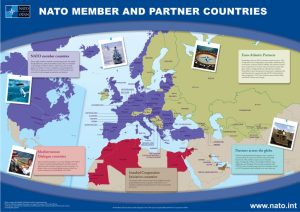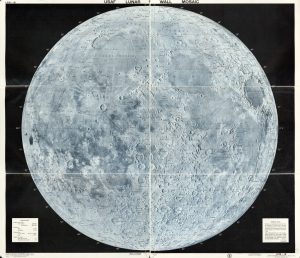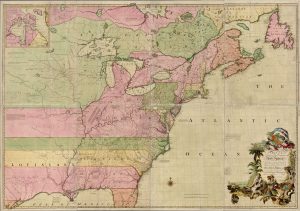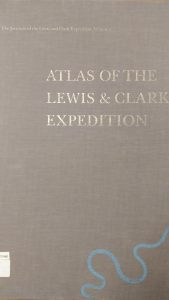
Larger Image
http://www.nato.int/nato_static/assets/pdf/pdf_publications/NATO_member_and_partner_countries-2011-ENG.pdf
As we enter 2017, the world has never been closer than it is now. Communication and information have completely revolutionized society and how countries interact with one another. As members of this society, it is important that we look to the past to see how it is currently shaping the future. One of the best ways to achieve this is to look at the institutions that define humanity. Therefore, I have decided to draw your attention to this map above, NATO Member and Partner Countries, as it is necessary to see how an organization such as NATO has evolved into its current state and how it influences our world today.
In the years immediately following World War II, once-allied nations began to drift further away from each other as their respective viewpoints and ideological values tore apart the friendship that had once helped end one of the greatest catastrophes in human history. The East and the West, the capitalists and the communists, democracy and tyranny all became synonymous with the two sides that would square off in the newly conceived conflict that would shape foreign diplomacy for nearly the entire last half of the century. This “Cold War,” as it would come to be known, put the countries of Western Europe against the countries of the Soviet Bloc. Fearing the new-found power of the Soviet Union, the United States turned to her closest allies, those nations of Western Europe as well as Canada, to contain this new threat. In 1949, these twelve nations came together and signed the North Atlantic Treaty. Perhaps what made this treaty so critical was the creation of the North Atlantic Treaty Organization, or as it is most commonly referred to, NATO. This new organization would play a key factor in the continued polarization of Europe and serve as a reminder that even though there may have been no fighting in the Cold War, there was most certainly a symbolic divide that would have massive political and social implications for years to come [1].
One of the crucial provisions of NATO was that any member nation that was under the protection of the United States also fell under its “nuclear umbrella” [2]. At first glance, this seemed like common sense. If a group of nations were going to get together under the pretense of mutual protection, why wouldn’t they include every aspect of their arsenal? The main issue with this policy is that it put the use of nuclear weapons on the forefront of any military or political issue between NATO and the Soviet Union. This escalated even the most minute issues into full-blown conflicts since the nuclear option was always on the table. This provision in the treaty also helped to create the arms race. With the induction of Turkey into NATO in 1952, the United States was literally able to put nuclear weapons on the border of the Soviet Union. What were the Soviets to do about this? They couldn’t attack Turkey without fear of retribution, and a peaceful solution seemed next to impossible. In response, the Soviet Union began to stockpile missiles and created their own version of NATO in the form of the Warsaw Pact. These actions rendered by both sides in the name of self-defense ended up having many unintended consequences. This information is important in the process of understanding this map.
This map, NATO Member and Partner Countries, seems simple enough. It is just a depiction of the member nations of NATO as well as the organizations that they work with. But, as with every map, it is never quite that simple. As my professor would say, “we must go nerd deep.” Now what do I mean by this? When one looks at this map, they must be willing to look at the various decisions the makers of this map made and the social and political implications of these decisions. The first thing I want to do is to draw your attention to the creator of the map, NATO. When discussing what their organization does, they tend to focus on the positive aspects of their actions and have a perspective that nations who are not a part of their group may not share. A treaty organization as large as NATO is going to have broad reaching impacts on nonmember nations. While the organization’s main interests seem to be in Europe, they are clearly seeking to spread their influence into Northern Africa and the Middle East. These new initiatives that they claim to reflect purely positive reasons for working with these nations may not be as innocent as they seem.
Even though the age of imperialism and expansionism may be over, the countries with power are still finding ways to exert their control over weaker nations and are still actively trying to preserve their influence throughout the world. This is made even more apparent by the fact that the nations that are not a part of any NATO initiatives are purposely represented with a bland beige while the rest of the nations involved are given vibrant colors. It makes it appear as these other nations do not matter. Map color is a powerful tool in this sense. Another interesting aspect of this map is its use of cartouches that are all militarily related. This is just another example of the subtle ways the creator of this map draws the viewer’s attention to the power of NATO. One can tell that NATO must be mighty if they are in control of such incredible machines of war.
The way this map is divided exposes how NATO decides the various political and social issues that they are involved in. The focus is clearly centered around Europe and it excludes almost all South America, Southern Africa and most of Asia. This may seem obvious because NATO is designed to reflect the nations of the Northern Atlantic, but what it is subconsciously doing is making the viewer believe that those parts of the world that are not included are irrelevant. Essentially, how can such a fundamentally important group such as NATO ignore half of the world? This is a clear example of the dynamics of power and how a map creator can reflect their views in a seemingly unbiased representative map. This map also frames NATO not as a group of powerful players, but rather a humanitarian group that ensures the protection of others while simultaneously helping countries around the world. This choice of dialogue makes the viewer infer that NATO is a righteous and necessary organization and that these nations they claim to be “helping” must need this help or are simply not as capable of functioning as those in NATO.
It is also important to note that even though the Cold War may be over, a quick look at a map that has been produced as recently as 2011 can show that a divide still exists. Even though several nations that were part of the former Soviet Union joined NATO, there are still quite a few that remain distant from this group. Much of Eastern Europe and the Asian countries that were under Soviet control remain aligned with Russia. Further, many of the nations that are green in Europe traditionally have been neutral in times of war, such as Ireland, Switzerland and Sweden, while others remain uninvolved because of past treaties. This continues to highlight the militaristic nature of NATO and how the organization may not be as humanitarian or peaceful as it claims to be.
NATO has a significant effect on the modern political state of the world. Even though the divide between NATO and Russia may have moved further East, the two sides are still fighting for influence. The current conflicts in Ukraine and Syria exemplify this. If one wants to understand the current state of geopolitics, this map would be an important place to start. Many of the world’s issues can be traced back to the geography and mapping of the world, and this map is no exception to this concept. But is also vital that one keeps in mind some of the biases this map may contain and look for its deeper meaning. Keep in mind, this map only represents one perspective of the complicated issues of today’s politics. One should look elsewhere as well to further understand this issue.
References
[1] History.com Staff. “Formation of NATO and Warsaw Pact.” History.com. 2010. Accessed March 30, 2017. http://www.history.com/topics/cold-war/formation-of-nato-and-warsaw-pact.
[2] Randolph, Stephen. “North Atlantic Treaty Organization (NATO), 1949.” Office of the Historian. Accessed March 30, 2017. https://history.state.gov/milestones/1945-1952/nato.
Nato. “NATO Member and Partner Countries.” NATO. May 1, 2011. Accessed March 30, 2017. http://www.nato.int/cps/en/natohq/topics_81136.htm
http://www.nato.int/nato_static_fl2014/assets/pdf/pdf_publications/NATO_member_and_partner_countries-2011-ENG.pdf






